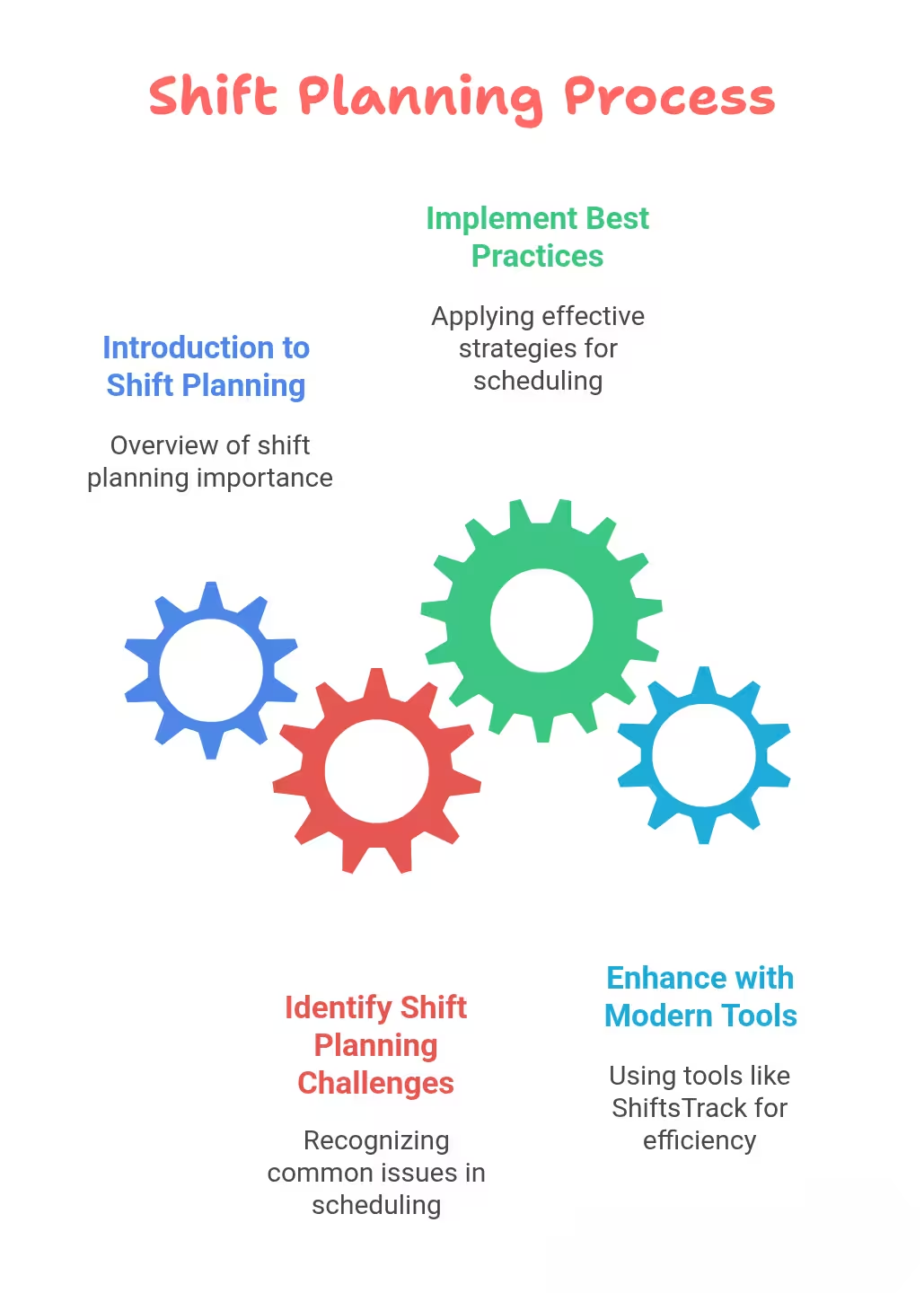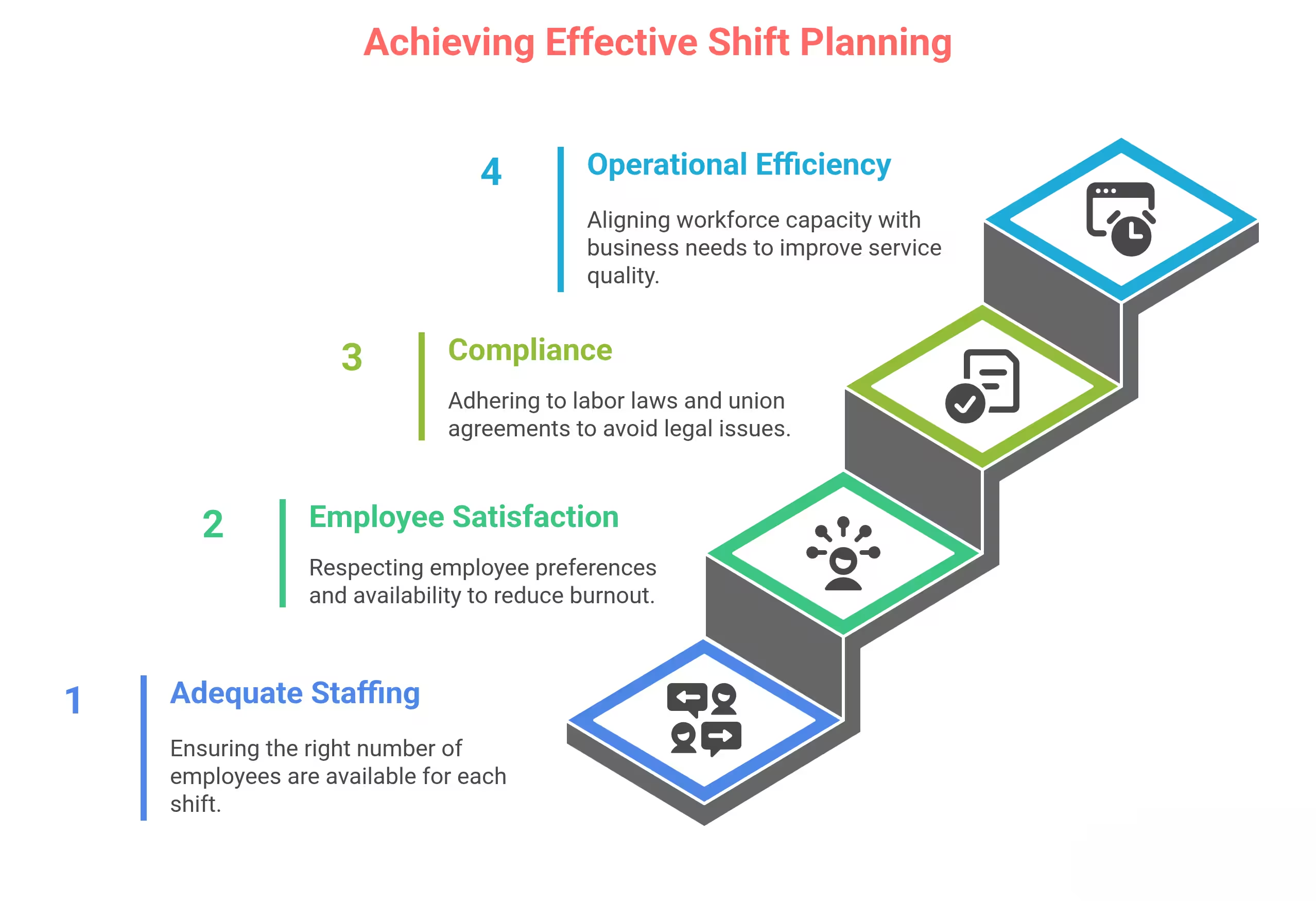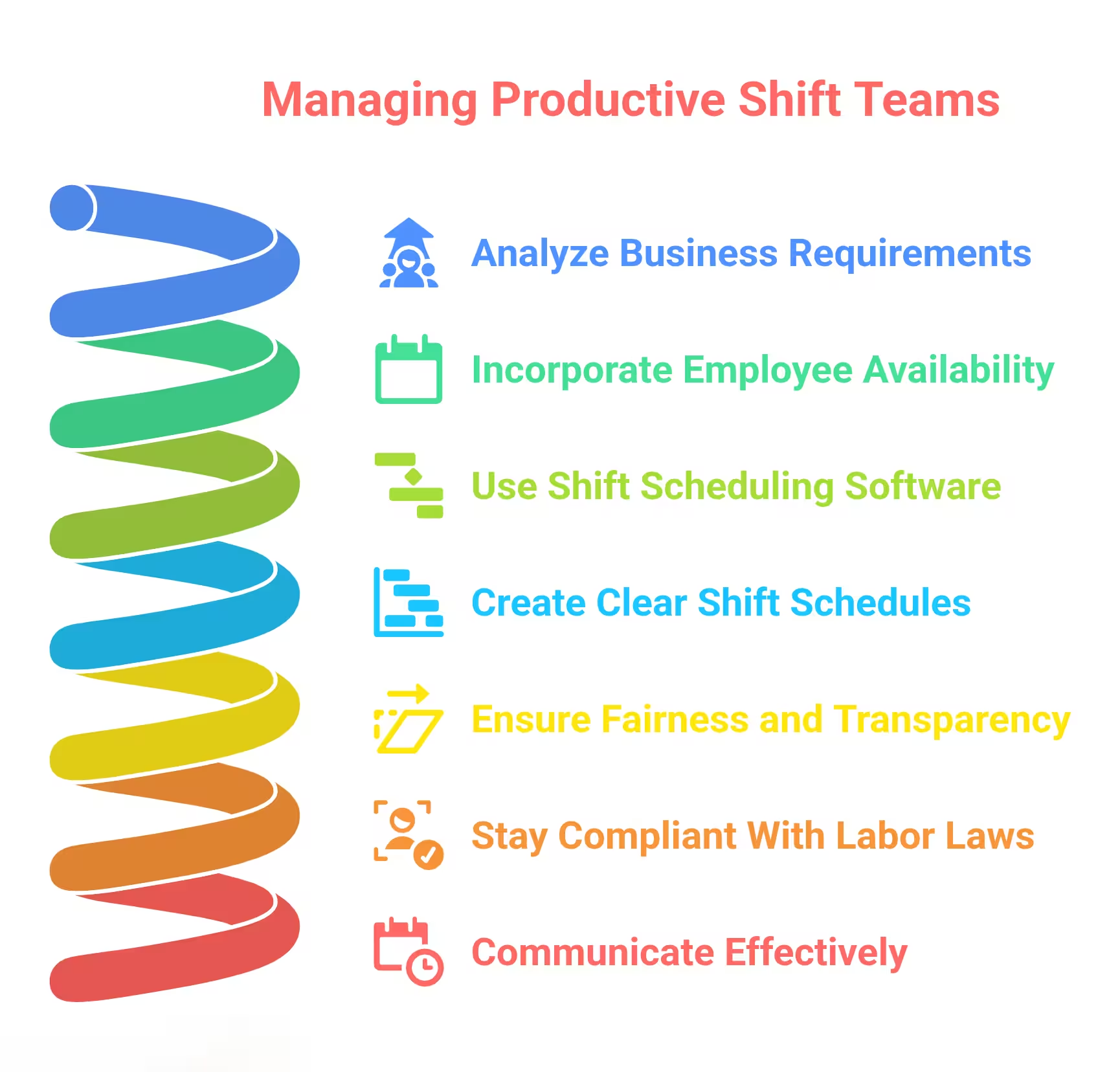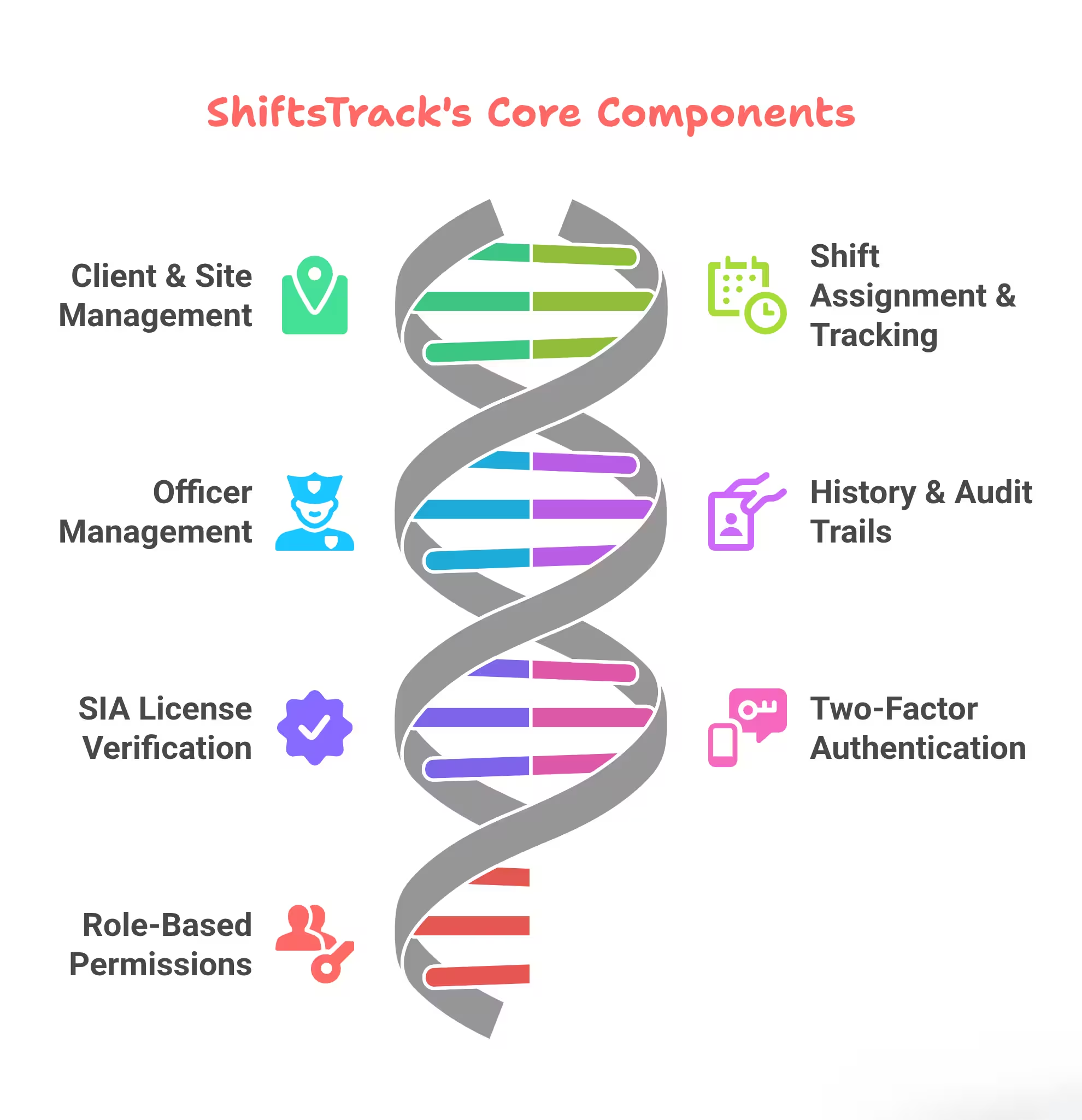Shift Planning 101: Best Practices for Managing a Productive Team

Introduction
Effective shift planning is a fundamental pillar of successful workforce management. Whether you oversee a retail store, healthcare facility, security firm, or any business that operates outside traditional 9-to-5 hours, creating and maintaining an efficient shift schedule is essential for productivity, employee satisfaction, and operational excellence.
In this comprehensive guide, you’ll learn the basics of shift planning, discover best practices, and understand how leveraging modern tools like ShiftsTrack can elevate your team management to the next level.
What Is Shift Planning and Why Does It Matter?
Shift planning refers to the process of assigning employees to specific working hours or shifts to ensure smooth business operations. It involves balancing business demands, employee availability, labor laws, and workload distribution.
Good shift planning matters because it:
- Ensures adequate staffing: Avoids understaffed or overstaffed shifts that can harm productivity or inflate costs.
- Enhances employee satisfaction: Respects workers’ availability and preferences, reducing burnout and turnover.
- Maintains compliance: Adheres to labor laws regarding working hours, breaks, and overtime.
- Boosts operational efficiency: Aligns workforce capacity with business needs, improving service quality.
Common Challenges in Shift Planning
Before diving into best practices, it’s important to recognize common obstacles businesses face when planning shifts:
- Last-minute absences: Sick days or emergencies can leave shifts uncovered.
- Complex availability: Employees may have varied schedules, part-time hours, or specific preferences.
- Overtime costs: Poor planning can lead to costly overtime.
- Fairness: Ensuring equitable distribution of weekend, night, or holiday shifts.
- Compliance: Navigating labor laws and union agreements.
- Communication gaps: Misunderstandings about schedules or changes.
Addressing these challenges proactively can save time, money, and stress.

Best Practices for Managing Productive Shift Teams
1. Understand Your Business Requirements
Start by analyzing your operational needs:
- Identify peak hours, busy days, and seasonal trends.
- Determine skill requirements for different shifts.
- Calculate the minimum number of employees needed per shift.
This data-driven approach ensures that shifts are planned to match demand accurately.
2. Incorporate Employee Availability and Preferences
Respecting your team’s personal schedules boosts morale and reduces absenteeism. Collect availability and preferences through:
- Surveys or apps where employees input their preferred shifts.
- Regular check-ins to update availability.
- Flexibility where possible to accommodate requests.
Tools like ShiftsTrack allow employees to communicate availability directly, streamlining this process.
3. Use Shift Scheduling Software
Manual scheduling is time-consuming and prone to error. Shift planning tools like ShiftsTrack automate complex tasks:
- Assign shifts based on availability, skills, and business rules.
- Track hours worked and calculate pay.
- Manage multiple clients, sites, and officers seamlessly.
- Provide real-time updates and notifications to employees.
Automation reduces mistakes, improves transparency, and saves managerial effort.
5. Ensure Fairness and Transparency
Avoid perceived favoritism by:
- Rotating unpopular shifts evenly.
- Communicating scheduling criteria clearly.
- Making schedules accessible online to all employees.
- Providing channels for feedback and conflict resolution.
Fairness boosts trust and long-term engagement.
6. Stay Compliant With Labor Laws
Understand regulations relevant to your industry and location regarding:
- Maximum working hours.
- Mandatory rest periods and breaks.
- Overtime pay.
- Night or weekend work regulations.
Scheduling software like ShiftsTrack can incorporate compliance checks automatically, reducing legal risk.
7. Communicate Effectively
Keep your team informed through:
- Automated shift reminders via email or SMS.
- Centralized access to schedules.
- Clear protocols for shift changes and time-off requests.
Good communication minimizes confusion and errors.

How ShiftsTrack Can Revolutionize Your Shift Planning
Managing complex shift schedules across multiple sites and clients can quickly become overwhelming. ShiftsTrack offers a cloud-based, intuitive platform designed to simplify this process for businesses with mobile and field-based teams.
Key Features of ShiftsTrack:
- Client & Site Management: Organize shifts by client and location, with detailed site information.
- Shift Assignment & Tracking: Assign shifts, track hours, and calculate payments seamlessly.
- Officer Management: Manage staff with specific roles and permissions.
- History & Audit Trails: Keep records of changes for accountability.
- SIA License Verification: Ensure compliance with licensing requirements.
- Two-Factor Authentication: Secure access for administrators.
- Role-Based Permissions: Control user access and actions.
With these tools, managers save time and reduce errors, while employees gain clarity and flexibility.

Tips for Overcoming Shift Planning Challenges with Technology
Handling Last-Minute Changes
ShiftsTrack’s real-time notifications and mobile accessibility enable quick reassignments and communication, reducing disruption.
Reducing Overtime Costs
Built-in tracking helps identify overtime early and allows managers to reallocate resources proactively.
Improving Employee Well-being
By incorporating preferences and automating fairness, the platform helps distribute workload evenly, preventing burnout.
Conclusion
Efficient shift planning is vital to running a productive, compliant, and satisfied workforce. It requires balancing operational demands with employee needs, legal constraints, and clear communication.
By understanding best practices and leveraging modern tools like ShiftsTrack, businesses can streamline scheduling, improve transparency, and enhance productivity.